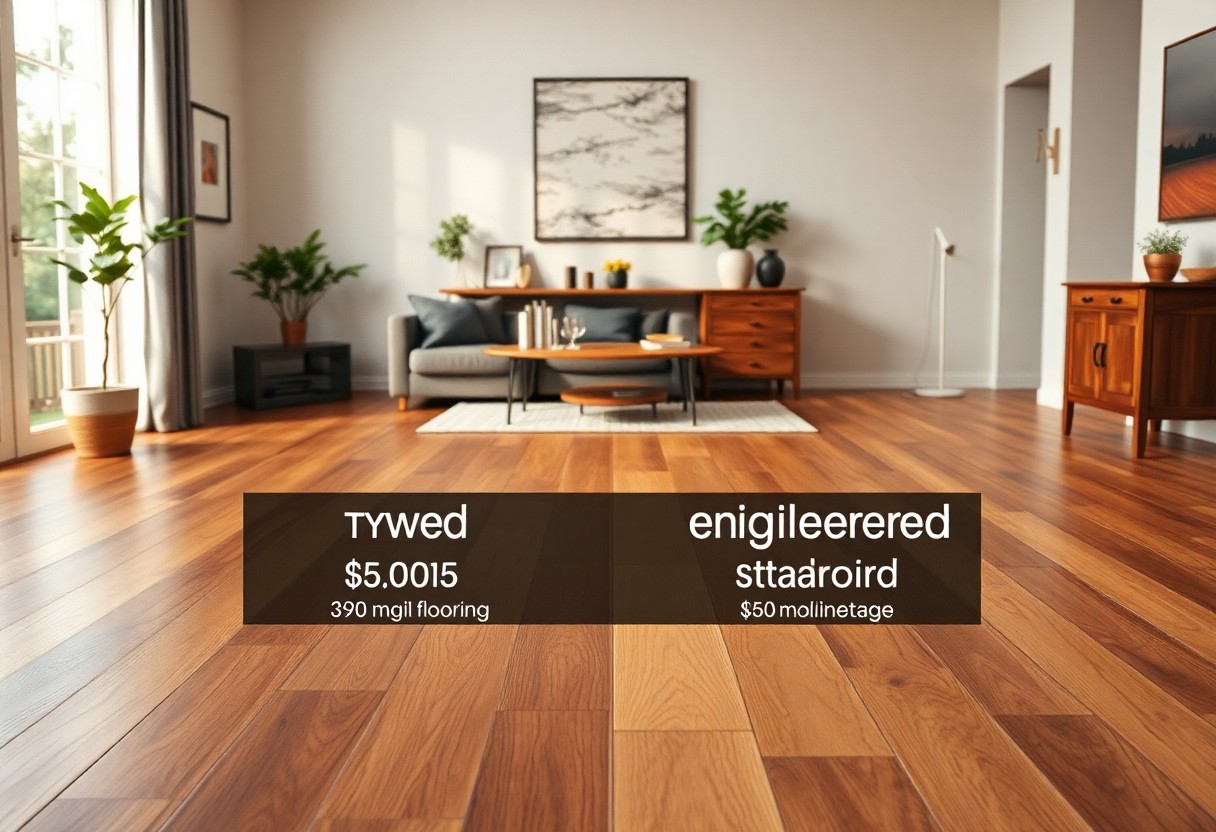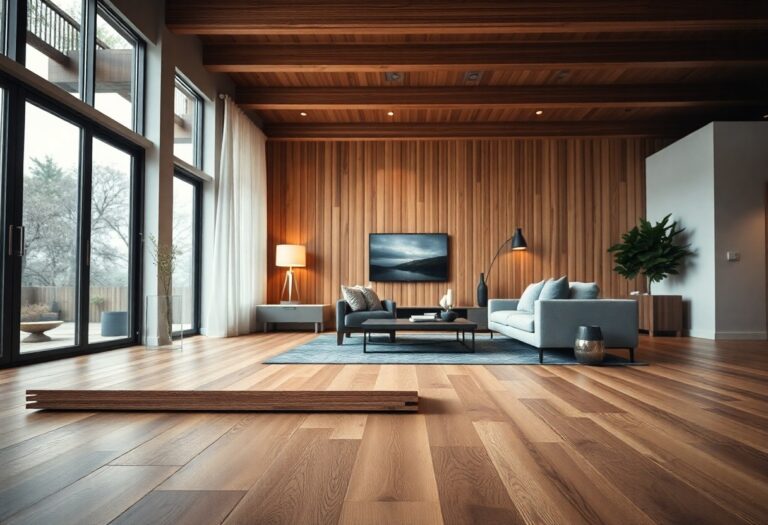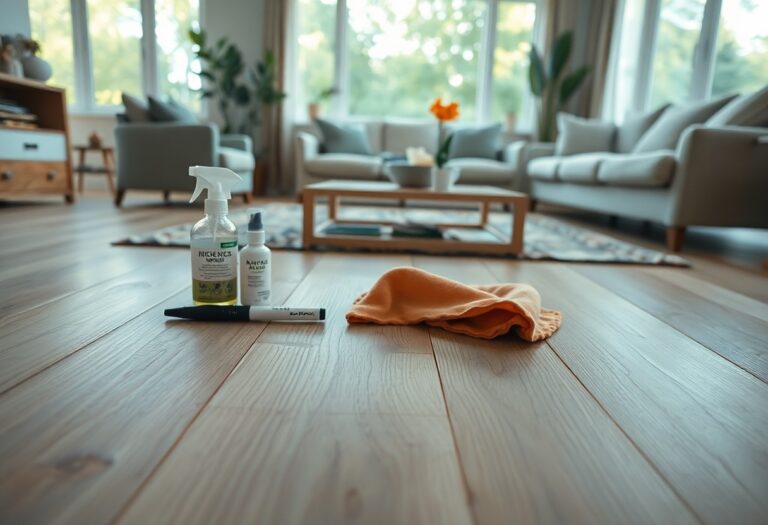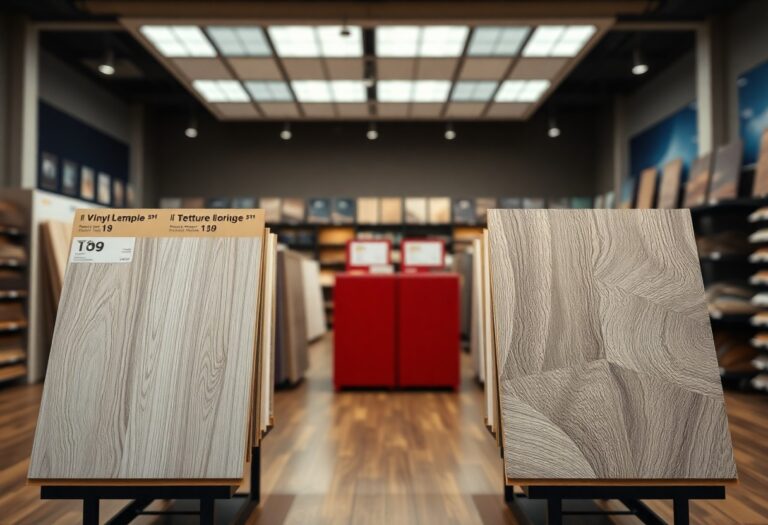This comprehensive guide will help you navigate the decision between vinyl and engineered flooring by exploring the various styles available, their associated costs, and necessary care tips. You’ll gain insights into the unique benefits each option offers, allowing you to make an informed choice that best suits your needs and preferences. Whether you’re renovating or building, understanding these flooring types will empower you to enhance your space effectively.
Clash of the Titans: Vinyl vs. Engineered Flooring
In the showdown between vinyl and engineered flooring, both options offer unique advantages that cater to different needs and preferences. Vinyl flooring excels in water resistance and affordability, making it ideal for areas prone to moisture, while engineered flooring provides a more authentic hardwood appearance and enhanced durability. Understanding the strengths and weaknesses of each will help you make an informed choice for your space.
The Building Blocks: Composition and Structure
Vinyl flooring is composed of multiple layers, including a backing, a vinyl core, and a wear layer, designed for flexibility and resilience. Engineered flooring consists of a thin layer of real hardwood atop high-density fiberboard or plywood, providing both aesthetic appeal and stability. This difference in structure directly impacts performance and suitability for various environments.
Aesthetic Appeal: Design Options and Styles
Both vinyl and engineered flooring present a vast array of design options, catering to diverse tastes and interior styles. Vinyl comes in a multitude of textures, colors, and patterns that can mimic natural materials, whereas engineered hardwood offers genuine wood grains and finishes that enhance the beauty of your space. Each choice allows you to create a unique atmosphere that complements your design vision.
With advancements in technology, vinyl flooring can now replicate the look of traditional hardwood, stone, or even tile through high-definition prints and 3D textures. Options range from contemporary designs with sleek finishes to classic styles featuring rustic charm. Engineered flooring, on the other hand, retains the warmth of real wood, available in various species like oak, maple, and hickory, offering natural variations in hue and grain. Your choice between these options will ultimately align with your aesthetic goals and functional needs.
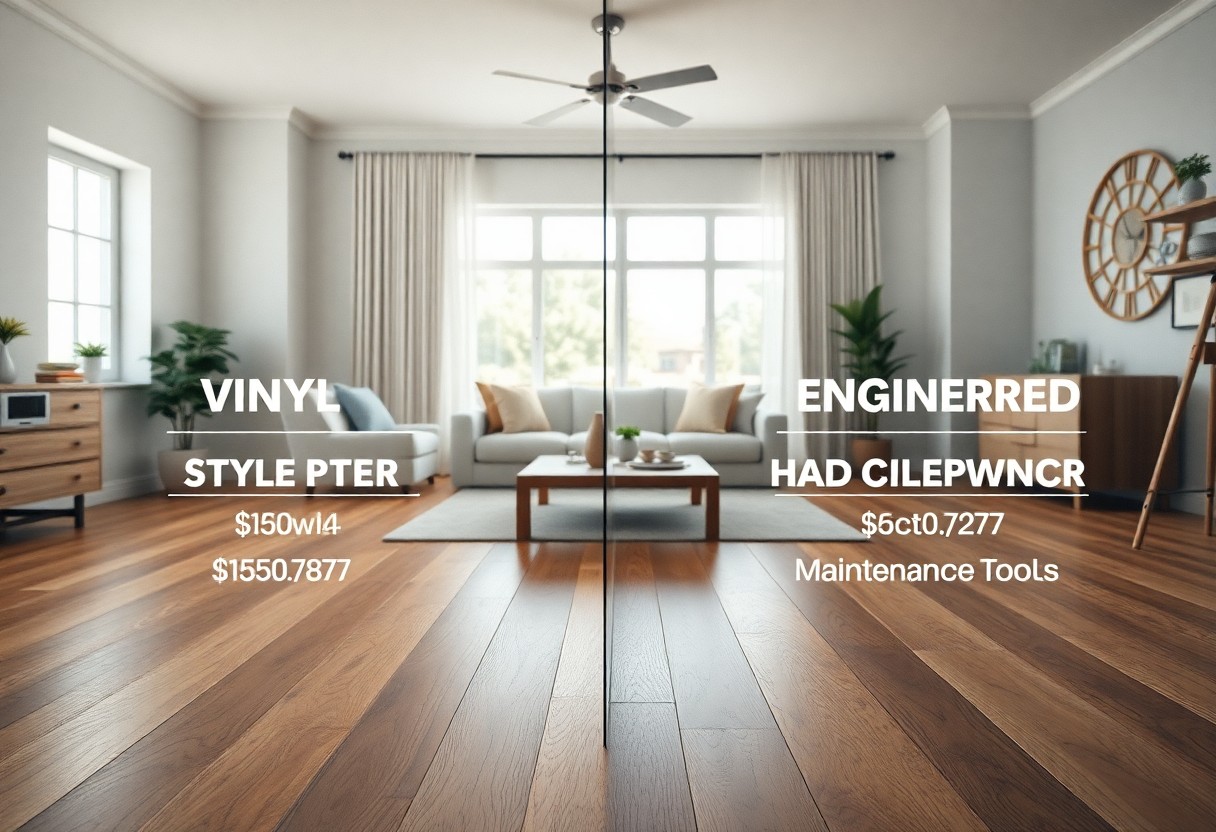
The Cost Factor: What Each Flooring Type Brings to Your Wallet
Initial Expenses: Installation and Material Costs
Vinyl flooring typically offers a lower initial investment, with costs ranging from $2 to $7 per square foot for material, and installation can add another $1 to $3 per square foot. Engineered flooring, while presenting a higher price tag of $4 to $10 per square foot for materials alone, can also require professional installation at similar rates. Your choice often hinges on material preferences and budget constraints, but keep in mind that DIY installation can reduce total costs, especially for vinyl types.
Long-Term Investments: Maintenance and Resale Value
Long-term costs reflect the ongoing maintenance and potential resale value of each flooring type. Vinyl flooring requires minimal upkeep, with occasional cleaning and no need for refinishing, making it economical over time. Engineered flooring, however, may necessitate refinishing after several years, influencing maintenance costs. Additionally, homes featuring high-quality engineered wood often boast higher resale values, catering to buyers’ preferences for aesthetic appeal and durability.
Investing in engineered flooring can enhance your home’s marketability, as it typically attracts buyers looking for luxury and longevity in their purchase. Real estate studies show that homes with quality engineered wood floors can yield a return on investment of about 70% to 80% at resale, compared to vinyl, which may not offer significant price boosts. While initial costs for engineered flooring are higher, the potential for increased resale value and the appeal of natural aesthetics can make it a wise choice for long-term homeowners. Ultimately, your decision should weigh both budget and future plans for property ownership.
The Care Conundrum: Maintenance Tips for Longevity
Proper care can extend the life of both vinyl and engineered flooring significantly. Regular maintenance helps preserve their aesthetics and functionality. Follow these tips for optimal longevity:
- Use a dust mop or vacuum regularly to prevent dirt buildup.
- Wipe up spills promptly to avoid stains.
- Choose gentle cleaning solutions designed for your flooring type.
- Avoid excessive water during cleaning to prevent warping.
- Use felt pads under furniture to prevent scratches.
Knowing these maintenance strategies will help you keep your floors looking pristine over the years.
Simple Cleaning Solutions: Daily Upkeep Strategies
Establishing a daily cleaning routine is necessary. Start with a dry mop or soft-bristle broom to collect dirt and debris. For deeper cleaning, a damp mop with a pH-balanced cleaner tailored for your flooring type can effectively remove grime without causing damage. Avoid abrasive tools that can scratch surfaces, and always wring out your mop to prevent excess water that could seep between seams, especially with engineered wood.
Major Repairs: Handling Damage and Restoration
Addressing significant damage requires prompt action to prevent further issues. For vinyl, consider replacing the affected tiles, using heat to soften and remove them if needed. In engineered flooring, depending on the damage extent, you might opt for patching or full plank replacement. Always match the new pieces to the existing ones for a seamless finish.
In cases of deeper scratches or dents, a specialized repair kit can be your best ally. For scratches, you might use a wood filler or a colored wax crayon to fill in the gap. If a plank is significantly damaged, removing it might entail cutting out the affected piece and fitting a new one in place, ensuring you blend the new floorboards with your existing decor. Engaging a professional might be advisable for extensive damage to ensure the repair meets aesthetic standards and maintains structural integrity.
Real World Applications: Where Each Flooring Shines
In everyday settings, both vinyl and engineered flooring display unique advantages that cater to specific needs. For instance, vinyl’s water resistance makes it ideal for kitchens and bathrooms, while the natural warmth of engineered hardwood elevates living spaces and bedrooms. Understanding the best applications for each type will enhance your home or business environment, leading to optimal comfort and aesthetics.
Residential Versatility: Best Spaces for Each Type
For residential settings, vinyl flooring excels in high-moisture areas due to its water resistance, making it perfect for kitchens, bathrooms, and basements. Conversely, engineered hardwood enhances aesthetic appeal in living rooms and bedrooms, providing a timeless warmth that complements various décor styles. Both options bring durability, but choosing the right space will maximize each flooring type’s benefits.
Commercial Considerations: Suitability in Business Environments
In commercial spaces, the choice between vinyl and engineered flooring hinges on foot traffic, aesthetics, and maintenance. Vinyl is often preferred in retail and healthcare settings for its ease of cleaning and durability under heavy use. Engineered hardwood finds its place in upscale environments, offering sophistication and elegance, though it may require more care to maintain its appearance over time.
Commercial environments demand flooring that balances functionality and style. Vinyl’s resilience to scratches, dents, and spills ensures longevity, making it suitable for restaurants and busy offices. On the other hand, engineered hardwood provides a touch of luxury often sought after in boutique stores or hospitality settings. While both options can withstand daily wear, vinyl typically requires less maintenance, crucial for maintaining business operations without interruption. With proper selection, your flooring can enhance the overall atmosphere and performance of your commercial space.
Trend Analysis: The Future of Flooring Preferences
The landscape of flooring preferences is shifting rapidly, reflecting broader lifestyle changes. Minimalist designs and multifunctional spaces influence the choice of materials, with a growing inclination towards sustainable and low-maintenance options. As homeowners prioritize comfort and aesthetics, the demand for stylish yet functional flooring continues to evolve. Emerging technologies also play a role, allowing for enhanced customizations that cater to individual tastes without compromising on quality.
Market Trends: Shifts in Consumer Choices
Consumers are increasingly gravitating towards flooring options that combine aesthetics with practicality. Vinyl flooring has surged in popularity due to its versatility, affordability, and waterproof features, appealing to families and busy households. Meanwhile, engineered hardwood remains a strong contender, offering a touch of luxury while meeting diverse design needs. The trend leans towards hybrid solutions, blending styles that may cater to a broader range of tastes and lifestyles.
Environmental Impact: Sustainability and Eco-Friendliness
Today’s flooring choices are significantly influenced by environmental considerations, with many consumers seeking sustainable options that minimize ecological footprints. Engineered wood, sourced from responsibly managed forests, and vinyl with recycled content are becoming more prevalent. Brands that emphasize eco-friendliness in production and material sourcing resonate strongly with conscientious buyers, shaping a market that prioritizes sustainability.
Statistics reveal that approximately 50% of homeowners consider sustainability a key factor in their flooring choices. This includes preferring products with certifications like FSC for engineered wood, which ensures responsible forest management practices. Vinyl flooring options are also evolving, with several manufacturers investing in recycling technologies to produce less harmful variants. The market is likely to see continued growth in environmentally conscious products, reflecting changing consumer values toward preserving the planet for future generations.
Conclusion
Taking this into account, choosing between vinyl and engineered flooring ultimately depends on your specific needs, budget, and aesthetic preferences. Both options offer distinct styles and advantages, allowing you to elevate the look and functionality of your space. As you consider long-term maintenance and costs, weigh these factors carefully to make an informed decision that aligns with your lifestyle. Your choice will impact not just the visual appeal of your home, but also its comfort and durability.


